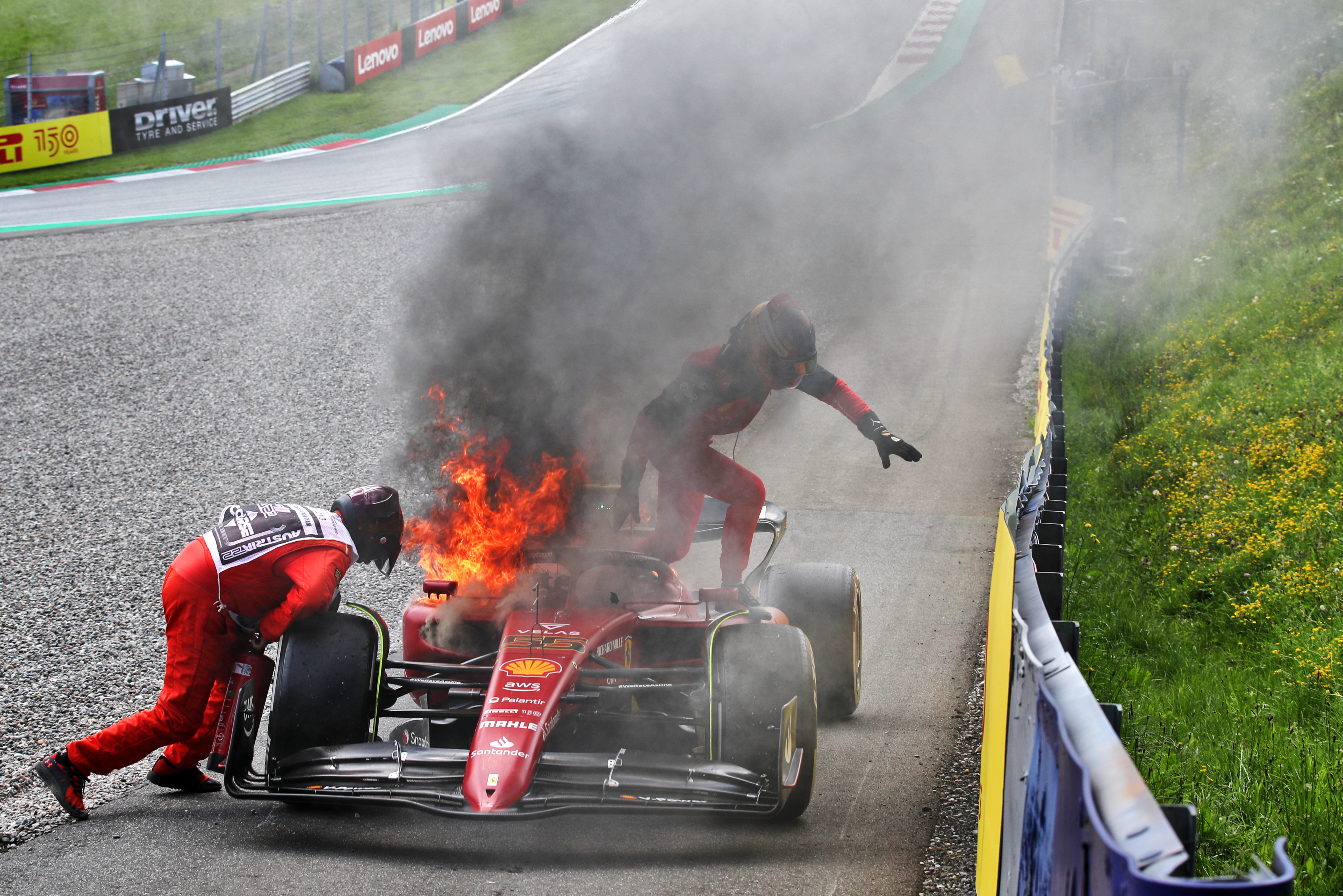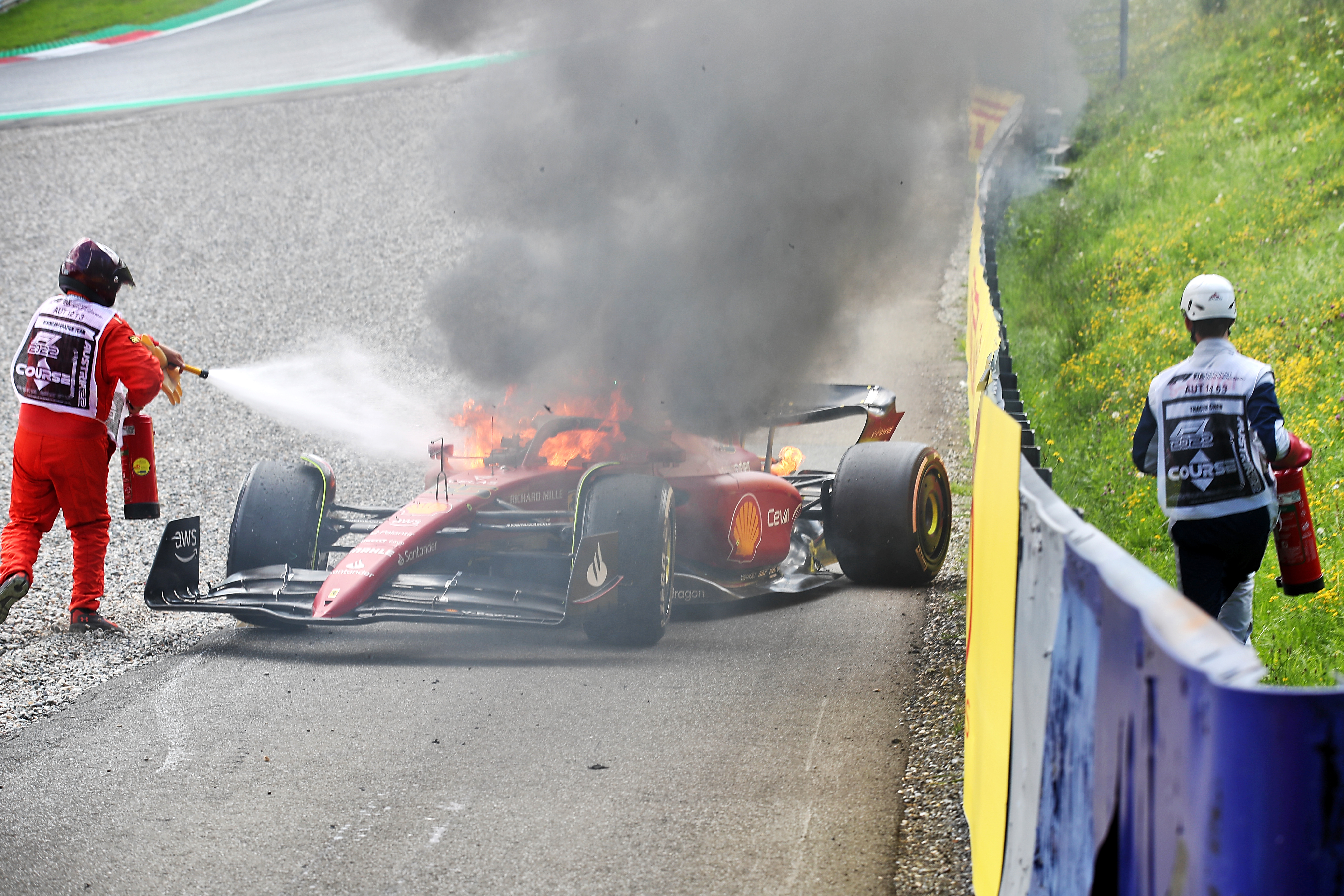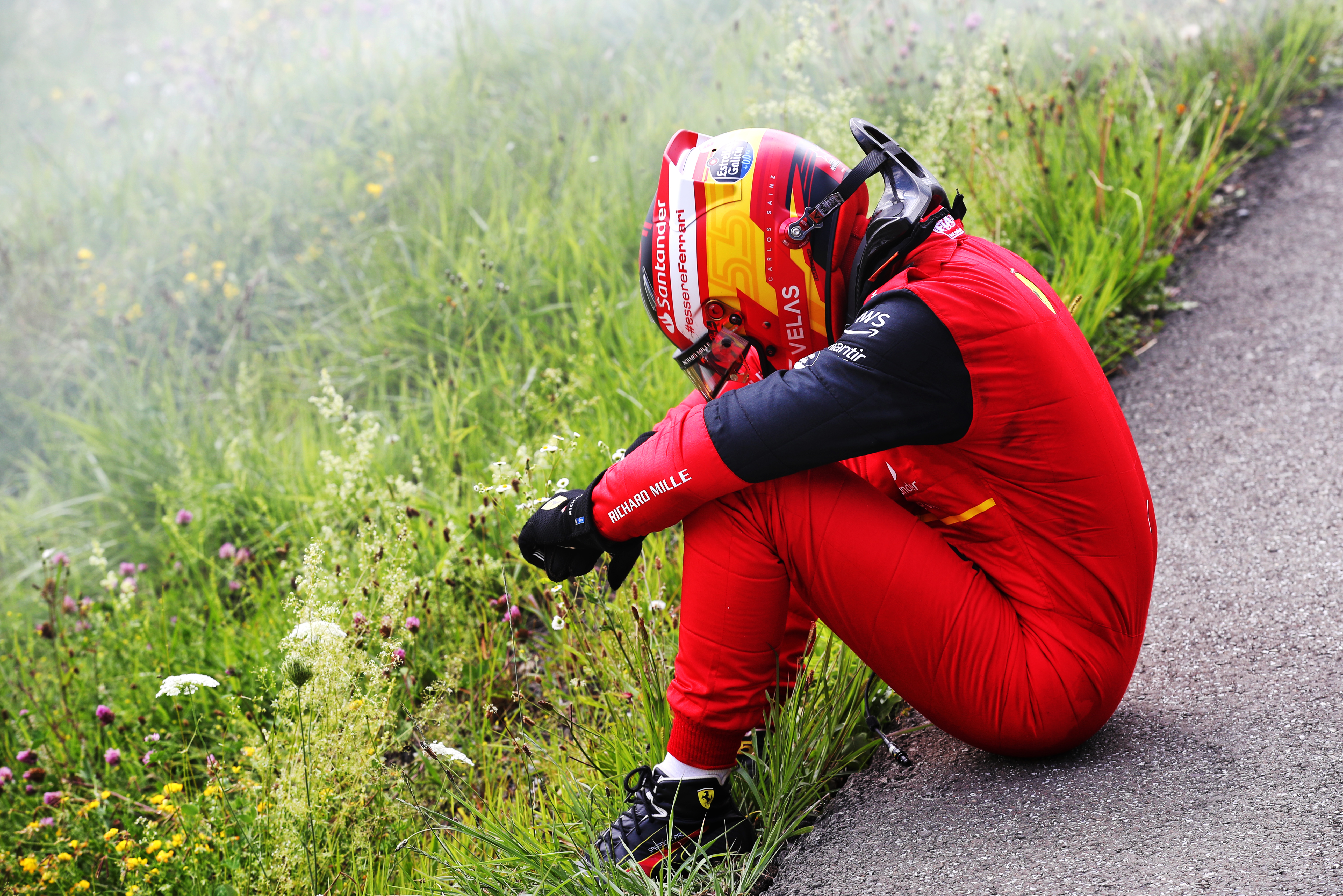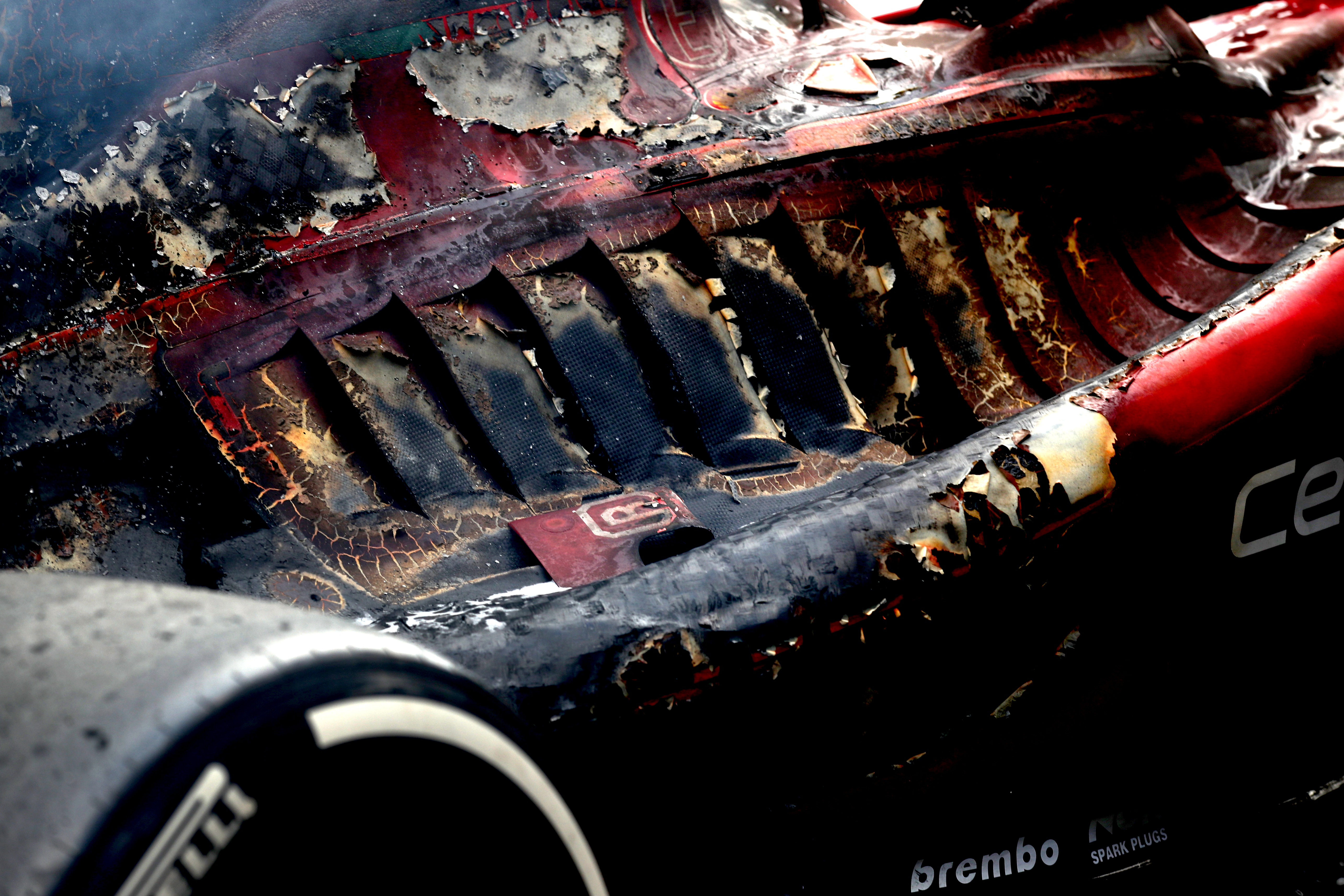Carlos Sainz has described the response to his Austrian Grand Prix fire “a bit slow” and suggested the process could be improved in future.
Sainz suffered an engine failure and pulled off the track on the uphill exit road at Turn 4. But he was unable to get out of the car because he needed to keep his foot on the brake to prevent it from rolling backwards.
After the car had rolled back some distance, he had no choice but to start to get out given the flames at the rear of the car were spreading.
But by this point, a marshal had reached the car and did a good job to chock the right-front wheel as it was rolling backwards, with the flames subsequently extinguished under the virtual safety car deployed.
“It was not an ideal and an easy situation,” said Sainz. “I saw in my mirrors that the car was catching fire, but at the same time, I was pressing the brake.
“As soon as I tried to jump out, I saw that it was awkward and I didn’t want to leave the car completely free, out of control rolling backwards while jumping out.
“I was calling the marshals to come and help me to put something on the tyres to stop the car rolling down.

“The whole process was a bit slow. At some point, there was so much fire that I had to really get a move on and jump out independently. And I think it was just at that time that the first marshal arrived and stopped the car.
“It’s definitely something we need to look at – what we could have done a bit faster because it was not an easy situation to be in.”
Despite Sainz’s complaints, the fire was extinguished quickly once the car had been stopped.
The FIA’s position is that the fire and the fact the car was rolling away from the marshals made this more complicated, hence the additional time needed to reach the car, stop it and extinguish the fire.
Sainz suffered the failure on the run from Turn 4 to Turn 4 on the 57th lap of the race. After initially moving to the right of the track, he rightly pulled the car to the left and drove up the escape road at Turn 4.
He came to a stop when facing the barrier, next to an opening that would allow easy access to the car. But it soon became clear that he was having problems with the car rolling backwards.

The incident was initially covered by waved yellow flags. Judging by the world feed coverage and its information about the race status, it wasn’t until around a minute after the point he had pulled off the track – and approximately 45 seconds after it became clear Sainz was struggling to stop the car rolling backwards – that the VSC was deployed.
By this point, a rescue vehicle was within the confines of the track to attend to the Ferrari, with a mobile crane behind the barrier waiting before entering once the VSC was deployed.
When asked for comment by The Race, the FIA confirmed that the incident was initially covered by double-waved yellow flags, then by the VSC once recovery vehicles were within the track as per procedure. As the car was deep in the runoff area, the full safety car was not deemed necessary. All of this was conducted as per procedure.
F1’s safety processes are continually reviewed and any lessons from the incident will be learned.
Ferrari team principal Mattia Binotto suspects the failure that eliminated Sainz was “very likely” the same as the one that put Charles Leclerc out of the Azerbaijan Grand Prix.

Binotto stressed that these are the only two failures of the V6 internal combustion engine (ICE) itself, although there have been other power unit troubles. Notably, Leclerc retired from the lead in Spain with a failure of the MGU-H and turbo.
“We’ve had only two engine failures so far,” said Binotto. “The power unit [overall] we had more than two, but the internal combustion engine two.
“Obviously, we need to look at what happened. Is it the same we had already in Baku with Charles? Very likely. It’s certainly a concern.
“But the people back at Maranello are working very hard to try to fix them. [It] is not solved yet – obviously if you look at what happened to Carlos it has not been solved yet.
“But we’ll have new elements and I know how strong they are working, how good they are. I can count on them that it will be addressed very soon, hopefully as soon as possible.”
Binotto said last month that Ferrari was in a phase of containing its power unit problems, with the fix expected in the “medium-long term”.
Under the engine freeze regulations, manufacturers can apply for permission to make modifications to homologated components on the basis of reliability. All four manufacturers, including Ferrari, are known to have already taken advantage of this although it’s not clear where in the process Ferrari is with solving any weakness of the ICE itself.

Ferrari’s customer teams have also had problems this season, with both Haas and Alfa Romeo suffering MGU-K failures.
During the Austrian Grand Prix, Haas driver Kevin Magnussen also suffered from an engine issue that he first detected on lap 31 that he feared might ultimately put him out of the race. But he was able to finish eighth.
“I had a slight engine issue that didn’t make me feel too good because I was getting very nervous that it would blow up, not the first time this year,” he said. “But there was good pace in the car and even with that slight misfire every time I went on throttle, it was still fast.”





